BOOK OF HOURS, use of Utrecht, in Dutch, ILLUMINATED MANUSCRIPT ON VELLUM [Haarlem, c.1470] 129 x 94mm. 245 leaves (modern foliation followed here begins on third leaf): 1 7(of 6 + vii, i as pastedown), 2 8, 3 9(of 8 +i, miniature), 4-13 8, 14 7(of 8, lacking i), 15-18 8, 19 9(of 8 + i, miniature), 20-25 8, 26 9(of 8 +i, miniature), 27-30 8, 31 4(of 6, iv and vi cancelled blanks), 15 lines in black ink in a gothic bookhand between two verticals and 16 horizontals ruled in grey, justification: 77 x 49mm, rubrics in red, text capitals touched red, paragraph marks and one-line initials alternately in red and blue, two-line initials alternately in gold on grounds of maroon and blue or in blue, some with infills of human heads, with extensive flourishing in red, green and purple, 17 three- and four-line initials in gold on grounds of maroon and blue with partial borders of burnished gold and green leaves on bunches of hairline shoots, some with bars of burnished gold, maroon and blue, THREE FULL-PAGE MINIATURES WITH THREE-SIDED BORDERS opposite pages with THREE LARGE INITIALS, ONE HISTORIATED, WITH MATCHING BORDERS of orange, blue and pink acanthus fronds between burnished gold and green leaves on bunches of hairline shoots, with single bars of gold maroon and blue (lacking one leaf and possibly a miniature leaf between ff.102-103, borders slightly cropped, tear to miniature f.14, capable of better repair). Cut-down ramboîtage of 16th-century blind-stamped German pigskin, heads in medallions, over wooden boards (text-block detached from first gathering and binding). PROVENANCE: 1. The liturgical use is for the diocese of Utrecht, with the martyr St Jeroen in the litany indicating an origin in the county of Holland; the style of the miniatures and flourishing shows that the book was made in Haarlem, probably for a local patron. The pilgrim badge of Job on the dungheap, which left an impression on the first two folios, may have come from Aalst or Wezemal. 2. Note of purchase from Gilhofer and Ranschburg, Vienna, 1912, inside lower cover. CONTENT: Dates of feasts relative to Easter f.1; calendar ff.2-13; Office of the Virgin, use of Utrecht ff.15-71v: matins f.15, lauds f.27v, prime f.39v, terce f.45v, sext f.49v, none f.58, compline f.66; prayers to the Virgin ff.71v-72v; rosary prayers with explanatory prefaces ff.73-82; prayers to the Virgin ff.82-97; memorials ff.97-102v: Peter, John the Evangelist, Andrew, Thomas, James, Philip and James, Bartholomew, Matthew, Barbara, Dorothy, 11,000 Virgins; Hours of the Passion ff.103-138v: matins (lacking opening) f.103, lauds, f.113, prime f.117v, terce f.121. sext f.124, none f.127v, vespers f.130v, compline 134v; prayers to be said before an image of Christ and to Saints Catherine, Margaret and Mary Magdalen ff.138v-141v; Penitential Psalms and Litany ff.143-170v; prayers, including to the Trinity, at the mass, guardian angel, wounds of Christ ff.170v-191; verses of St Bernard ff.191-195; prayers, ending to the three kings ff.195-198v; Office of the Dead, with only three lessons as for the use of Utrecht ff.200-233; indulgenced prayers for the dead ff.233-242. This is an early instance of the full five decades of the rosary with incidents from the life of the Virgin, opening Dien du reyne ioncvrouwe , interspersed with Ave Maria and Pater noster (both in Latin) at the end of each decade. The prefatory material explains its structure, validates its use by recounting a heavenly vision and elucidates its origin with the old legend of the monk whose prayers were taken as rosebuds by the Virgin to weave herself a crown. Although prayer beads were a long established aid to devotion, the systematisation of rosary devotion spread rapidly in the Rhineland from the 1470s, fostered by the Dominicans. ILLUMINATION: The intricate borders are in the Haarlem acanthus and bunches of twigs style associated with the Masters of the Haarlem Bible, who take their name from a three-volume Bible made for
BOOK OF HOURS, use of Utrecht, in Dutch, ILLUMINATED MANUSCRIPT ON VELLUM [Haarlem, c.1470] 129 x 94mm. 245 leaves (modern foliation followed here begins on third leaf): 1 7(of 6 + vii, i as pastedown), 2 8, 3 9(of 8 +i, miniature), 4-13 8, 14 7(of 8, lacking i), 15-18 8, 19 9(of 8 + i, miniature), 20-25 8, 26 9(of 8 +i, miniature), 27-30 8, 31 4(of 6, iv and vi cancelled blanks), 15 lines in black ink in a gothic bookhand between two verticals and 16 horizontals ruled in grey, justification: 77 x 49mm, rubrics in red, text capitals touched red, paragraph marks and one-line initials alternately in red and blue, two-line initials alternately in gold on grounds of maroon and blue or in blue, some with infills of human heads, with extensive flourishing in red, green and purple, 17 three- and four-line initials in gold on grounds of maroon and blue with partial borders of burnished gold and green leaves on bunches of hairline shoots, some with bars of burnished gold, maroon and blue, THREE FULL-PAGE MINIATURES WITH THREE-SIDED BORDERS opposite pages with THREE LARGE INITIALS, ONE HISTORIATED, WITH MATCHING BORDERS of orange, blue and pink acanthus fronds between burnished gold and green leaves on bunches of hairline shoots, with single bars of gold maroon and blue (lacking one leaf and possibly a miniature leaf between ff.102-103, borders slightly cropped, tear to miniature f.14, capable of better repair). Cut-down ramboîtage of 16th-century blind-stamped German pigskin, heads in medallions, over wooden boards (text-block detached from first gathering and binding). PROVENANCE: 1. The liturgical use is for the diocese of Utrecht, with the martyr St Jeroen in the litany indicating an origin in the county of Holland; the style of the miniatures and flourishing shows that the book was made in Haarlem, probably for a local patron. The pilgrim badge of Job on the dungheap, which left an impression on the first two folios, may have come from Aalst or Wezemal. 2. Note of purchase from Gilhofer and Ranschburg, Vienna, 1912, inside lower cover. CONTENT: Dates of feasts relative to Easter f.1; calendar ff.2-13; Office of the Virgin, use of Utrecht ff.15-71v: matins f.15, lauds f.27v, prime f.39v, terce f.45v, sext f.49v, none f.58, compline f.66; prayers to the Virgin ff.71v-72v; rosary prayers with explanatory prefaces ff.73-82; prayers to the Virgin ff.82-97; memorials ff.97-102v: Peter, John the Evangelist, Andrew, Thomas, James, Philip and James, Bartholomew, Matthew, Barbara, Dorothy, 11,000 Virgins; Hours of the Passion ff.103-138v: matins (lacking opening) f.103, lauds, f.113, prime f.117v, terce f.121. sext f.124, none f.127v, vespers f.130v, compline 134v; prayers to be said before an image of Christ and to Saints Catherine, Margaret and Mary Magdalen ff.138v-141v; Penitential Psalms and Litany ff.143-170v; prayers, including to the Trinity, at the mass, guardian angel, wounds of Christ ff.170v-191; verses of St Bernard ff.191-195; prayers, ending to the three kings ff.195-198v; Office of the Dead, with only three lessons as for the use of Utrecht ff.200-233; indulgenced prayers for the dead ff.233-242. This is an early instance of the full five decades of the rosary with incidents from the life of the Virgin, opening Dien du reyne ioncvrouwe , interspersed with Ave Maria and Pater noster (both in Latin) at the end of each decade. The prefatory material explains its structure, validates its use by recounting a heavenly vision and elucidates its origin with the old legend of the monk whose prayers were taken as rosebuds by the Virgin to weave herself a crown. Although prayer beads were a long established aid to devotion, the systematisation of rosary devotion spread rapidly in the Rhineland from the 1470s, fostered by the Dominicans. ILLUMINATION: The intricate borders are in the Haarlem acanthus and bunches of twigs style associated with the Masters of the Haarlem Bible, who take their name from a three-volume Bible made for
.jpg)
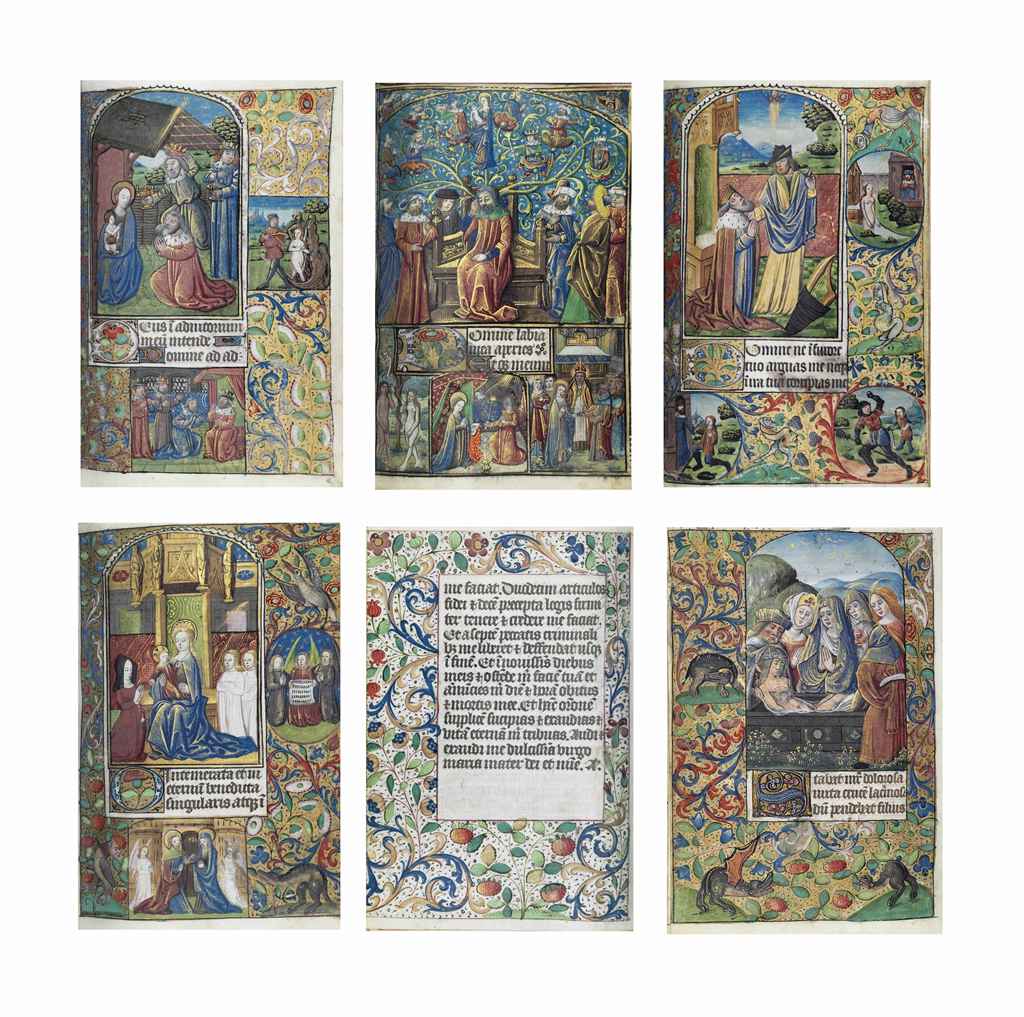
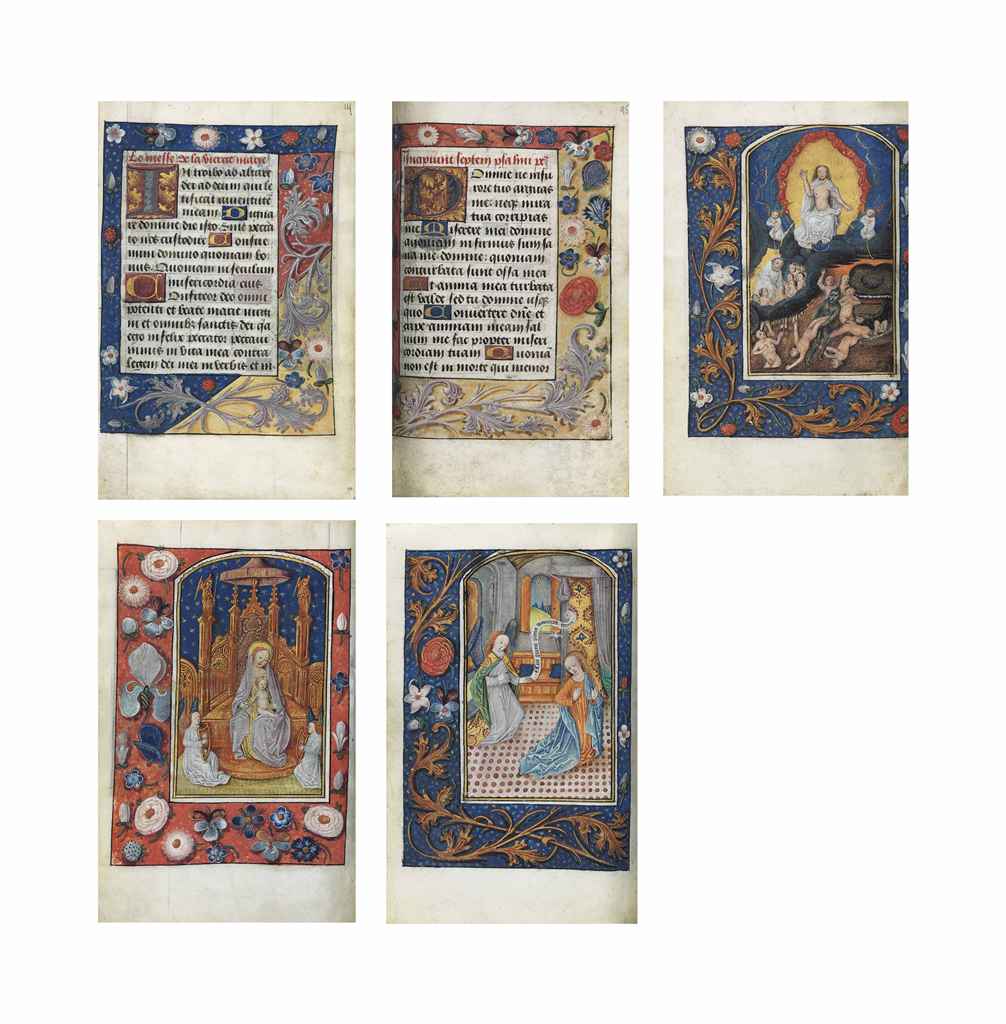
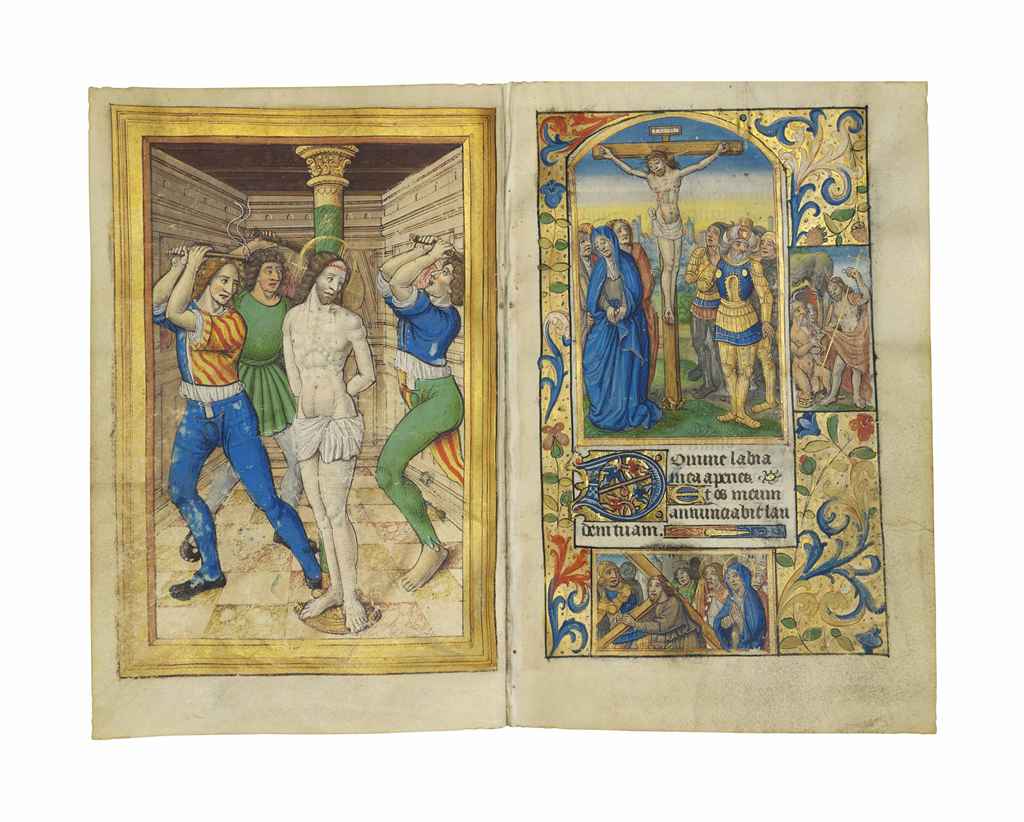
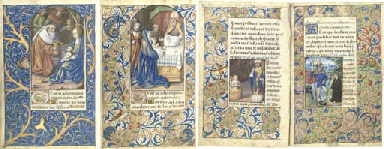
.jpg)
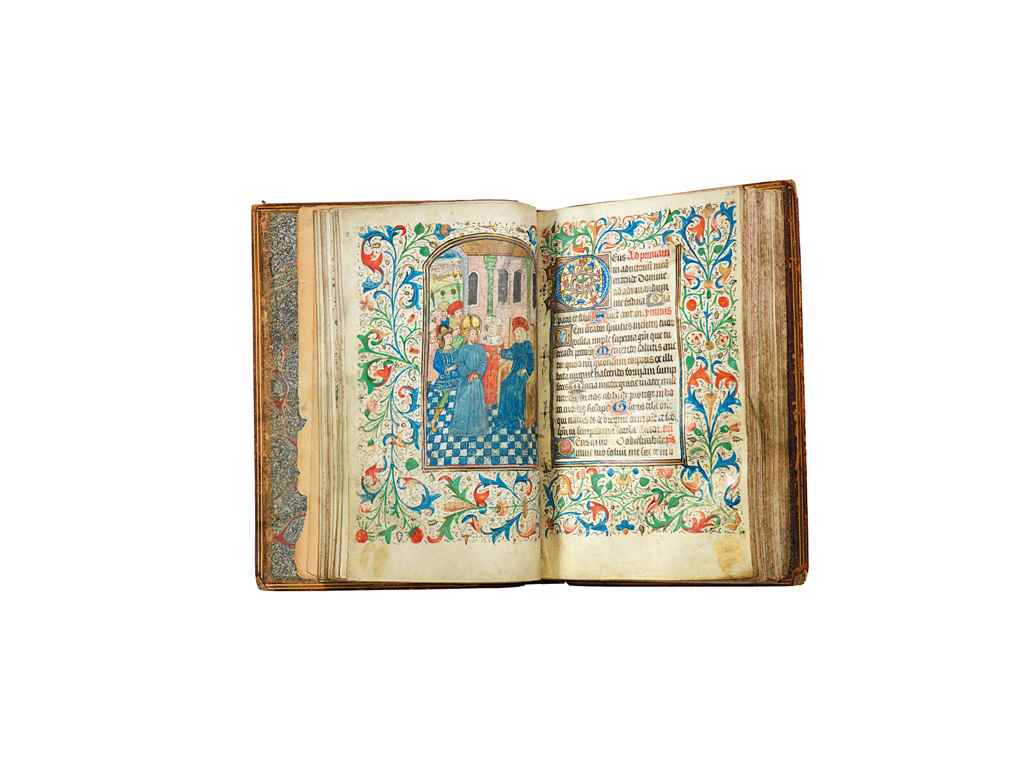


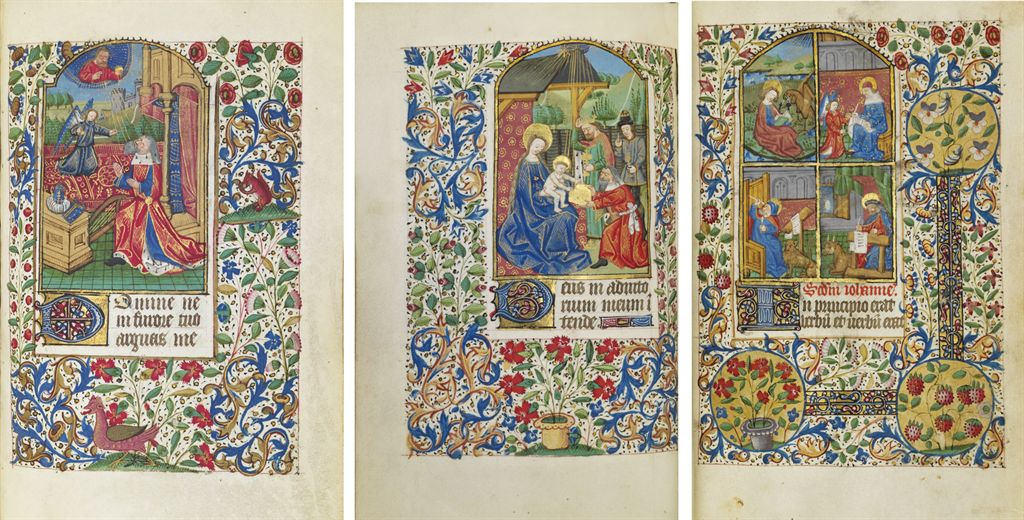
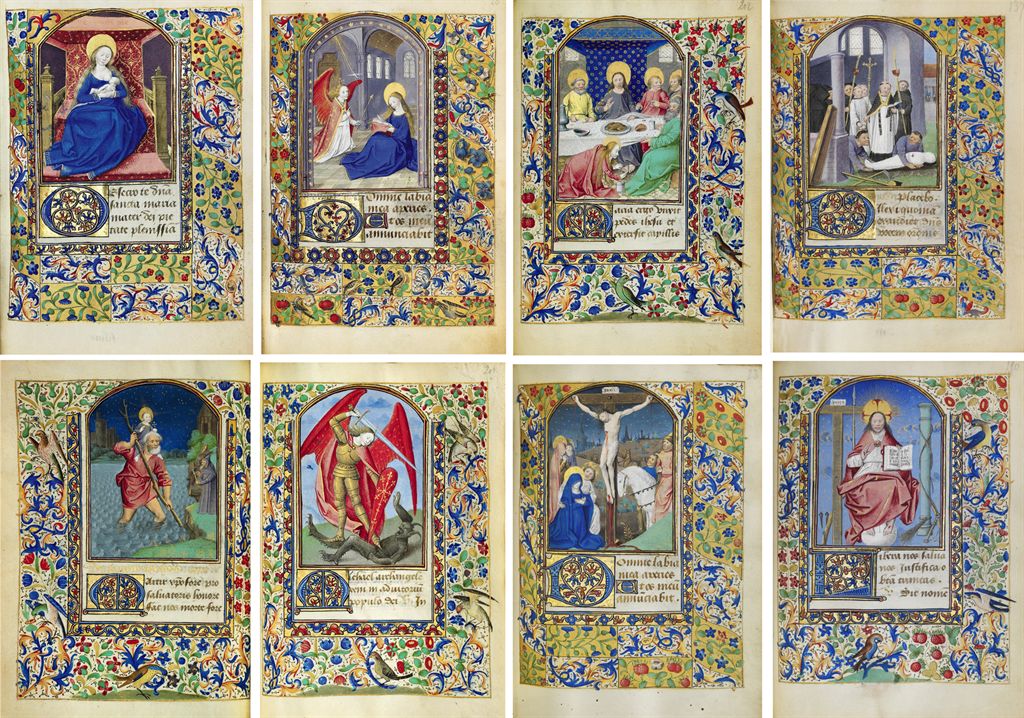
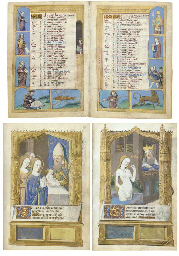
.jpg)


Testen Sie LotSearch und seine Premium-Features 7 Tage - ohne Kosten!
Lassen Sie sich automatisch über neue Objekte in kommenden Auktionen benachrichtigen.
Suchauftrag anlegen